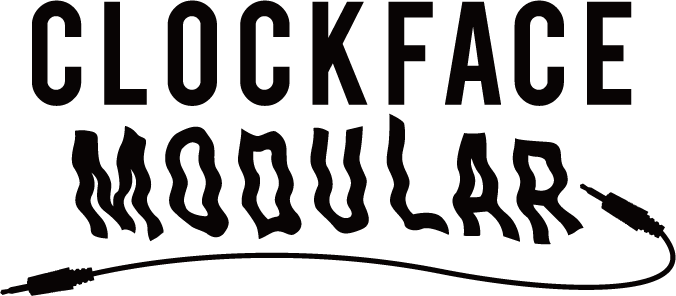Except for the changes, the following explanation is for firmware version 1.1s. There were many additional features in the firmware 1.3 series released in the spring of 2017. See "Firmware 1.3" below for an overview. For Metropolis purchased in our shop, we will update the firmware free of charge (shipping fee paid by the customer). Please contact us by e-mail with the order number at the time of purchase Metropolis is a powerful sequencer in Eurorack format that has undergone a major brush-up based on the legendary Roland System 100m sequencer, Ryk M-185. Set the quantized pitch with the slider and the gate signal of the corresponding stage with the lower switch.
In Metropolis, even if the clock advances, it does not always go to the next stage, just below the slider
Pulse count switchStays at that stage for the number of clocks set in (1-8 clocks). How to get the gate out while on the same stage
Gate mode switch and STEP / DIV controlSet with. A mode in which the gate is continued during the same stage, a mode in which the gate of the length set in STEP / DIV is repeated, a mode in which the gate is output only at the first clock of the stage, and a mode in which the gate is not output during the stay of the stage ( Rest). Change pitch smoothly
slideOr skip the stage
skipCan also be set immediately for each stage with the button below the gate mode switch.
One of the real pleasures of the sequencer module is
Modulates the sequencer itselfIt is to do. This makes it possible to create a variety of sequences that are far from phrases created by a single sequencer. Select and assign a modulation target to Metropolis
Two Aux CV inputsThe modulation of gate length and STEP / DIV amplifies the sense of groove in the sequence, and the melody progress can be made organic by modulating the slide time, various transpositions, loop length, etc. For example, you can patch the Metropolis CLOCK and SYNC outputs to the external clock input of another CV sequencer or random module, and feed the CV output from that to the Metropolis AUX.
A variety of powerful settings can be accessed with a single push of the button on the left panel, allowing you to create flexible sequence settings. For details on buttons, mouse over each button in the image above to see it. Other features include:
- The following sequence modes can be selected (Mode button)
Forward, Forward-fixed, Reverse, Reverse-fixed, PingPong, PingPong-Fixed, Random, Random-fixed, Brownian, Brownian-fixed
- A time-based (not Rate-based) portamento (slide) similar to TB-303, you can also adjust the portamento time.
- Simple stage skipping by double-clicking the slide button
- Built-in quantizer for any key and more than 30 scales (Scale button)
- Synchronization with external clock or sequence with internal clock by tap tempo is possible (INT / EXT, BPM button)
- Settings can be saved in memory that does not disappear even when the power is turned off (Save, Load buttons)
- Shuffle setting possible (Swing button)
- Internal clock divide (DIV button)
- Sync output that outputs a pulse at the first or last step allows easy synchronization with other sequencers using reset (setting from Config)
- Two of the following can be controlled using the signal to the AUXA / B input (assigned from the Aux button)
gate length, transpose, key shift, root shift, sequence length, step divisor and octave offset.
- The pitch range of the slider, clock divider type, synchronization type, and reset type can be set by setting (Config).
- Except for the Config menu, all menu actions can be operated at one level of menu button push and value setting
Interface
Explanation of each part is displayed by mouse over
Firmware 1.3
Changes due to a major firmware upgrade include the following:
- -Improved timing event performance such as clock
- -Aux input can now operate at 1V / Oct when assigned to P.Pre, P.Post, Root. A setting for calibration has been added.
- -Added new Aux parameters such as P.PreL, P.PostL, RooTL
- -Ratcheting (hitting the gate without changing the step stay time) is now possible by turning the encoder while pressing the stage button
- -Added TunE to the CONFIG menu to help tune the oscillator
- -Swap button and slide operation can be exchanged by bSLId / bSKIP option in CONFIG
- -RST_r has been added to the rsT option in the CONFIG menu. At this time, the mode where the sequence runs only when the gate to RESET is high
- -Pressing the step button while holding down MODE, STAGES, STEP / DIV, SCALE, SWING or DIV allows shortcut adjustment of each parameter
- -DINSync improved
- -Save the sequence to one of eight presets by pressing the step button while holding SAVE. To load, press LOAD and press the step button for the preset you want to recall
- -Global settings can also be saved in 8 presets. Turn the encoder in the SAVE or LOAD menu to select a preset





